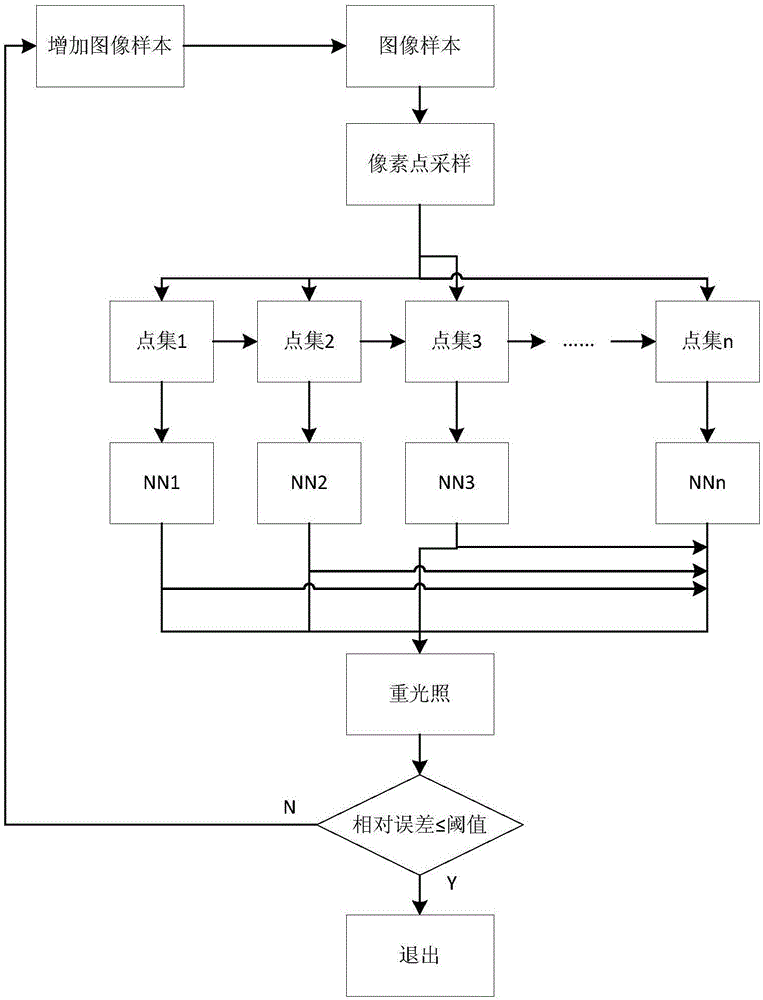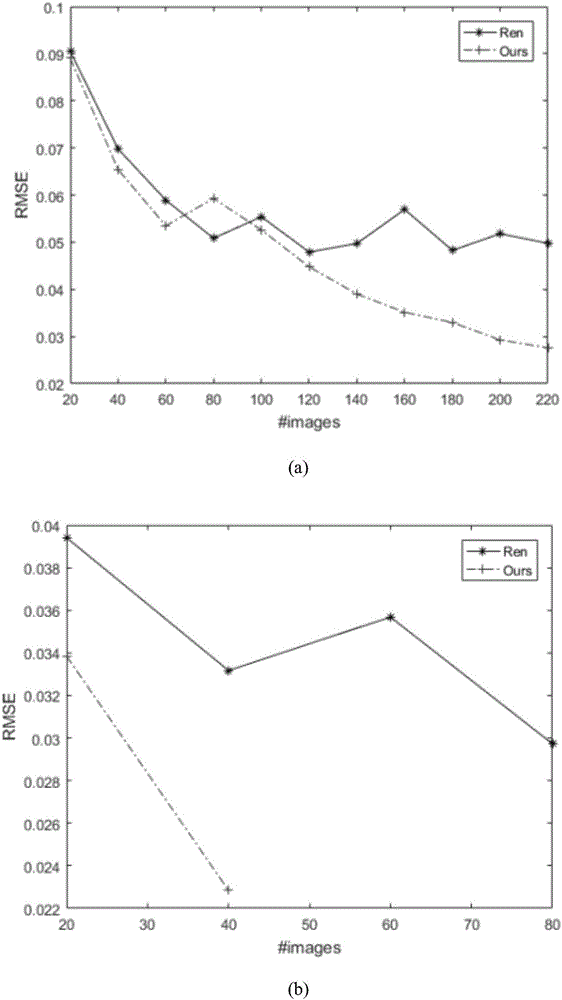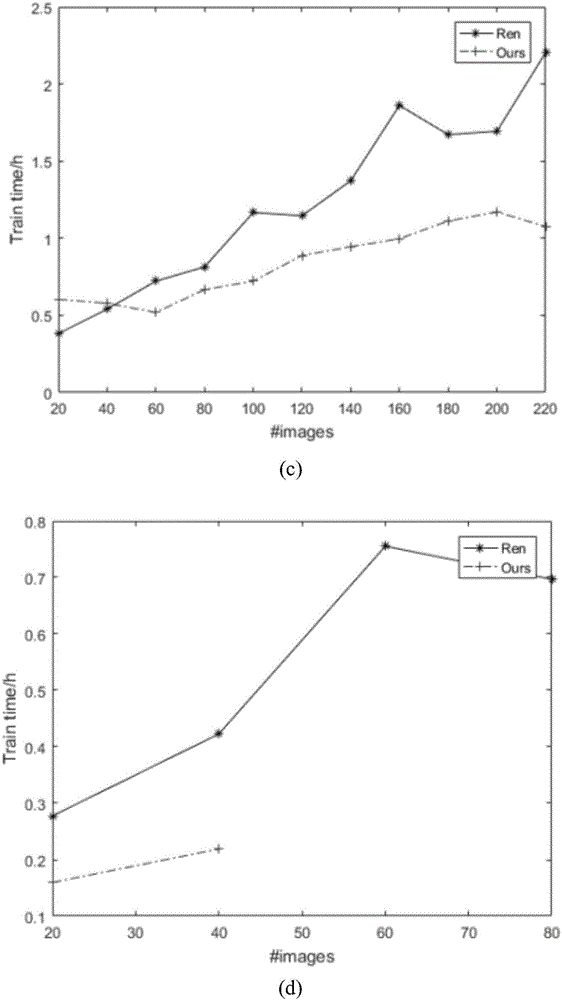Image-based re-lighting method
A technology of heavy lighting and images, applied in the field of machine learning and graphics, can solve the problems of increasing work intensity and storage space, and achieve the effect of less image samples, less training time, and high PSNR value
- Summary
- Abstract
- Description
- Claims
- Application Information
AI Technical Summary
Problems solved by technology
Method used
Image
Examples
Embodiment Construction
[0031] Below in conjunction with accompanying drawing, technical scheme of the present invention is described in further detail:
[0032] An image-based re-illumination method of the present invention, such as figure 1 shown, including:
[0033] Step 1: Collect a set of three-dimensional scene data (Dagon, Mitsuba), including the LigX and LigY coordinates of the point light source and the corresponding image set ImageSet output at a fixed viewpoint; calculate the average of the image set in the three channels of R, G, and B Value, get ImgAvg_R, ImgAvg_G, ImgAvg_B; scene data is shown in Table 1.
[0034] Table 1 scene data
[0035] Scenes Light source distribution image size dragon 31×31 64×48 Mitsuba 21×21 64×48
[0036] Step 2: Randomly sample in the image set ImageSet to form the image subset ImageSubset, and the number of image samples is ImageNum.
[0037] Step 3: Randomly sample the pixels of the image subset like ImageSubset to obtain...
PUM
 Login to View More
Login to View More Abstract
Description
Claims
Application Information
 Login to View More
Login to View More - R&D
- Intellectual Property
- Life Sciences
- Materials
- Tech Scout
- Unparalleled Data Quality
- Higher Quality Content
- 60% Fewer Hallucinations
Browse by: Latest US Patents, China's latest patents, Technical Efficacy Thesaurus, Application Domain, Technology Topic, Popular Technical Reports.
© 2025 PatSnap. All rights reserved.Legal|Privacy policy|Modern Slavery Act Transparency Statement|Sitemap|About US| Contact US: help@patsnap.com



